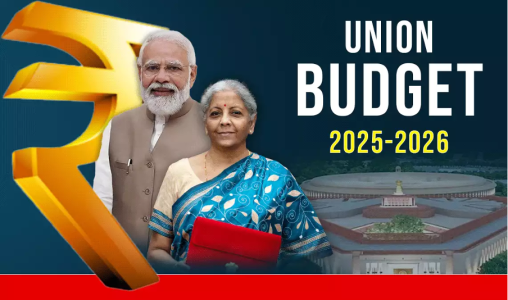Widgetized Section
Go to Admin » Appearance » Widgets » and move Gabfire Widget: Social into that MastheadOverlay zone
India’s 2025-26 Budget: Strengthening International Trade, Boosting Exports and Managing Imports
The views expressed are those of the author and do not necessarily reflect the views of ASPA as an organization.
By Pooja Paswan
March 3, 2025

India’s Union Budget 2025-26, presented by Finance Minister Nirmala Sitharaman, comes at a critical juncture in global trade. As major economies such as the United States, China and the European Union recalibrate their trade policies to navigate geopolitical tensions, supply chain realignments and economic slowdowns, India is positioning itself as a resilient and competitive player in the global market. The budget introduced targeted reforms to enhance exports, optimize imports and strengthen domestic manufacturing in alignment with global trade trends.
Tax Benefits and the Production-Linked Incentive (PLI) Schemes
The Union Budget 2025-26 introduced a series of incentives and structural reforms aimed at enhancing India’s role in global trade. With a strong emphasis on export-oriented growth, the government is prioritizing domestic manufacturing to reduce import dependency while simultaneously strengthening export incentives through tax benefits, subsidies and the Production-Linked Incentive (PLI) schemes. A key focus of the budget is on expanding Free Trade Agreements (FTAs) with major trade partners to boost market access for Indian exporters. To support this agenda, the government has allocated ₹2,250 crore under the Export Promotion Mission to facilitate Indian businesses in international markets. Additionally, ₹1,615 crore has been earmarked for the pharmaceutical industry to enhance India’s global standing in the sector, while ₹2,300 crore has been directed towards the Biotechnology Research, Innovation and Entrepreneurship Development (Bio-RIDE) program, aimed at fostering biotech exports. These measures are expected to strengthen India’s global trade competitiveness and accelerate its transition into a leading export-driven economy.
Strategy to Balance Exports and Imports
In line with its export-driven strategy, the budget also places a strong emphasis on reducing the trade deficit by strategically managing imports while boosting exports in high-value sectors such as pharmaceuticals, automobiles and information technology. To control the outflow of foreign exchange, the government has increased import duties on luxury goods and select raw materials, discouraging non-essential imports. Simultaneously, the budget expands support for Micro, Small and Medium Enterprises (MSMEs) to strengthen their participation in global markets. Several key sectors, including engineering goods, textiles, electronics, semiconductors, pharmaceuticals and processed food products, are expected to benefit from export-friendly incentives and subsidies. On the import front, the government is actively reducing reliance on foreign goods by encouraging domestic manufacturing and improving supply chain infrastructure, ensuring that India moves towards a more self-reliant and resilient trade ecosystem. These measures collectively strengthen India’s global trade positioning, making it a more competitive and sustainable player in the international market.
Infrastructure Investments
A strong trade infrastructure is essential for reducing logistics costs and improving export efficiency. Recognizing this, the budget has allocated ₹1.70 lakh crore to the National Highways Authority of India (NHAI) to improve road connectivity to ports, ensuring faster transportation of export goods. Additionally, ₹31,239 crore has been allocated for metro projects, enhancing urban trade logistics and connectivity to industrial zones. A further ₹5,649 crore has been set aside for border infrastructure and connectivity projects, aimed at facilitating smoother trade with neighboring countries. The expansion of port infrastructure and logistics parks is expected to lower export costs, streamline trade operations and improve supply chain efficiency, making Indian goods more competitive in international markets.
Export Growth Through Small Businesses
Recognizing the vital role of Micro, Small, and Medium Enterprises (MSMEs) in India’s export ecosystem, the budget introduces measures to support their growth and global expansion. ₹9,000 crore has been allocated to the Guarantee Emergency Credit Line (GECL), ensuring working capital support for export-driven MSMEs. Additionally, the Prime Minister Employment Generation Programme (PMEGP) will receive ₹2,954 crore to help small businesses enter global markets, while ₹1,500 crore has been allocated under the Raising and Accelerating MSME Performance (RAMP) program to digitize trade operations and improve market access. These initiatives will enhance MSMEs’ competitiveness, enabling them to participate more actively in global trade.
Expanding Global Partnerships: Free Trade Agreements (FTAs) for Market Access
The budget underscores India’s commitment to strengthening bilateral and multilateral trade agreements. India is currently negotiating or implementing Free Trade Agreements (FTAs) with the European Union, the United Kingdom, the United Arab Emirates and Australia, aiming to open new market opportunities for Indian exporters. The key benefits of these FTAs include lower tariffs on Indian exports, easier access to foreign markets and increased foreign direct investment (FDI) in key industries. Sectors such as textiles, information technology, and pharmaceuticals are expected to benefit the most, as these agreements will reduce trade barriers and make Indian goods more cost-competitive on the global stage.
Driving India’s Global Trade Renaissance
The Union Budget 2025-26 sets the stage for a bold transformation in India’s global trade strategy. By harmonizing policy reforms, financial incentives and infrastructure development, the government is crafting a dynamic and resilient trade ecosystem that aligns with evolving global economic realities. With targeted customs duty adjustments, expansion of PLI schemes and strategic investments in trade logistics, India is not just reacting to global trends but actively reshaping its role in international commerce.
Author: Pooja Paswan is the Chair of the PA Theory Network and the Chair of ASPA’s Students and New Administration Professionals Section (SNAPS). An alumna of the John F. Kennedy School of Government, Harvard University, she is an Assistant Professor in the Department of Political Science at Jamia Millia Islamia University, New Delhi, India. Pooja holds a Ph.D. in Public Administration, specializing in Public Policy. She was the recipient of the ASPA 2019 Founders Fellow). Her work spans development administration and public policy. She can be reached at her Academia profile and [email protected]. Twitter @poojapaswan.


Follow Us!